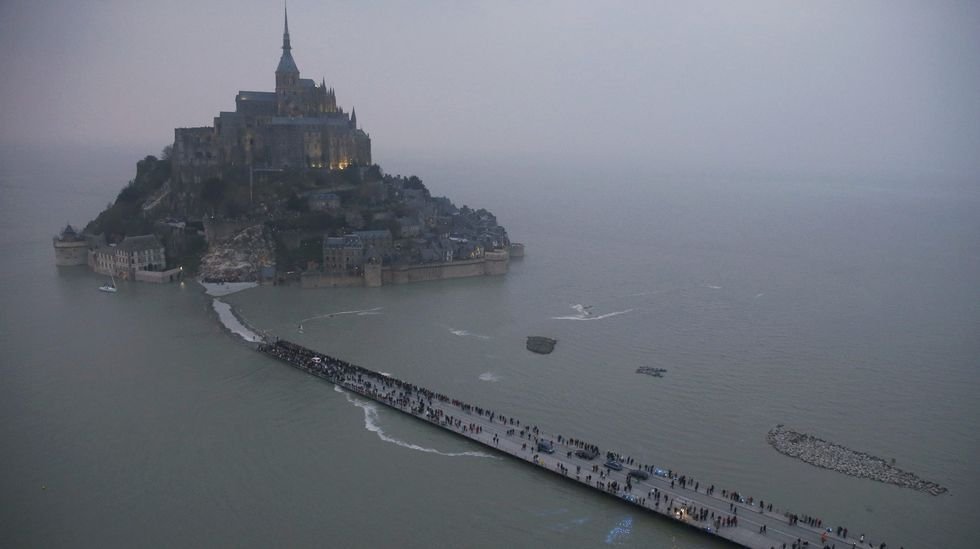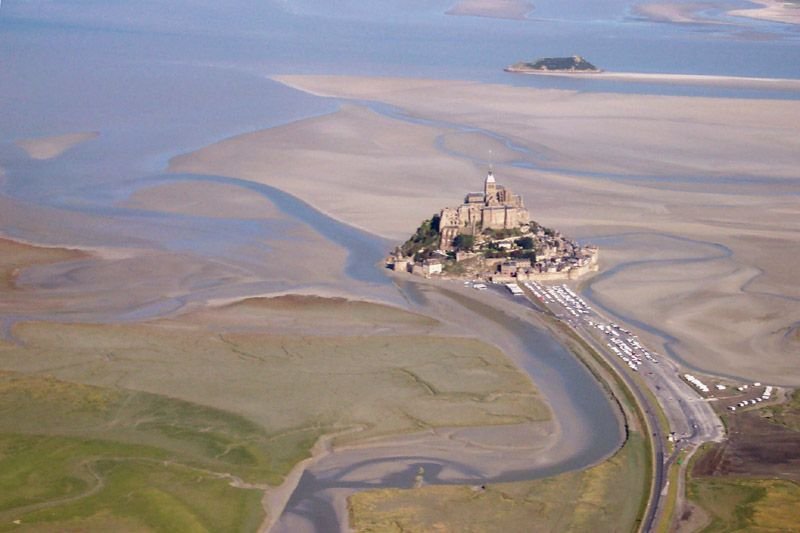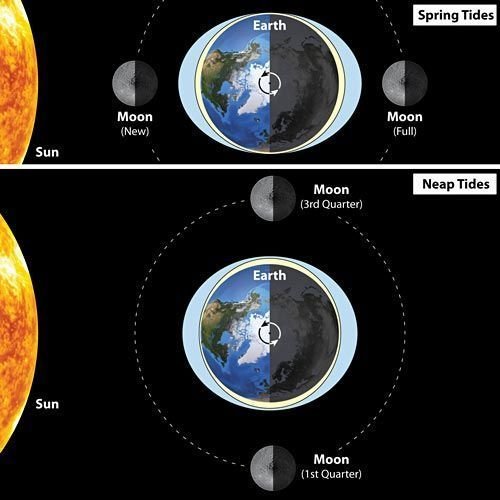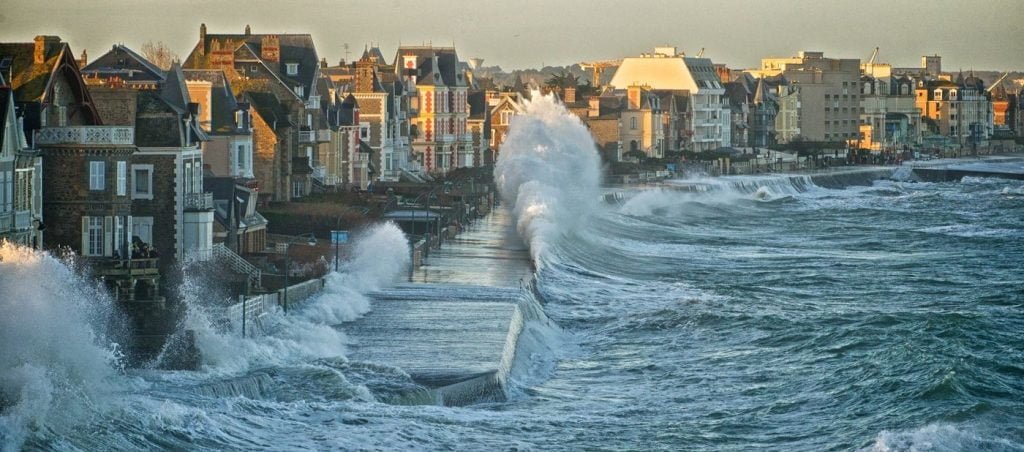Many are the natural phenomena that accompany us in our daily lives; rain, lightning, thunder, sunrise, lunar transit and the moon cycle, among other things are present in our lives continuously, although many times we ignore them.
Today we are going to stop at a natural phenomenon related to our satellite, since it has been scientifically proven that the moon influences the formation and action of the tides.
Remember to visit all our offers of surfcamp, and also all the services offered since 1996 in the Canary Islands, through our website Surfcanarias.
What are Tides?

They are natural phenomena that consist of the movement of the waters of seas and oceans in a periodic and constant way mainly due to the attraction forces exerted by our satellite, the moon.
The sun also intervenes in the process, but the greatest protagonism is exercised by the moon and the action is based on the action of the force of gravity exercised by the sun and the moon in relation to the earth.
They have their origin in the interior of seas and oceans, moving their actions and effects towards the coastal areas of the whole earth, thus producing the rise and fall of the sea level.
Tides and Water Levels
Tides and water levels in seas and oceans are directly affected by the force of gravity exerted by the moon on the earth.
We might think that only on the part of the earth that is facing the moon will these movements and increases in water levels take place; however this is not so and every day there are two rises in the water levels of seas and oceans and two falls in the whole planet.
What Causes the Tides?
We can say in a simple way that the forces of attraction that both the sun and the moon exert on the earth, allow a deformation and consequent movement of the water masses of seas and oceans; this causes the water levels to rise and the tides to form.

Saint-Malo (France) – Photography taken during the beginning of a tide.
The earth keeps spinning, so when the face that was facing the moon changes by the rotation movement, the water levels go down because the attraction force exerted decreases.
These forces will then fall on the face of the earth facing the moon and the corresponding rise of the waters will touch this part of the planet.
High and Low Tide
The well-known high tide, is constituted by the moment in which the level of the sea reaches its maximum point of height.
Two high tides occur daily, with a difference between both of twelve hours and twenty-five minutes.

Mont Saint-Michel (France) – Photography taken during the high tide period.
Low tide is the time when the marine waters are at their minimum height.
There are also two low tides during the day, with a difference between one and the other of twelve hours and twenty-five minutes.

Mont Saint-Michel (France) – Photography taken during the low tide period.
The time span between high and low tide is six hours, twelve minutes and 30 seconds; therefore the tide changes daily by an average of 50 minutes.
Spring Tides and Neap Tides
The so-called Spring tides are produced when there is a full moon or when it is a new moon. When this type of tide occurs, the greatest amplitude is given between high and low tide.
The reason for this situation is given by the alignment of the sun and moon, which produces a greater gravitational pull.
Neap tides are produced during the lunar quarters, crescent and waning quarters; then the minimum distance between high and low tide occurs.
The cause of this phenomenon is that the sun and the moon are at opposite points, forming a 90-degree angle.

Gravity, Inertia and the Two Tidal Bumps
The attraction produced by the gravity between the earth and the moon has more force on the side of the earth than the rotation movement in front of the moon, because they are closer.
This attraction causes the water located in this area to be “pulled” towards the moon; gravity acts to pull the water out and inertia seeks to keep it in place.
Gravity is stronger than inertia and the water attracted to the moon generates the water bulges on the side of the earth closest to the moon.
Thus, gravity and inertia form two water bulges; they occur when the moon is closer to the earth.
Both protrusions remain aligned with the moon as it revolves around the earth.
Changing angles and changing tides
As the moon rotates around the earth, its angle becomes greater and decreases as it relates to the equator; this is the declination of the moon.
As tidal protrusions follow the changes of the moon, they also increase or decrease their angles and declinations with respect to the equator.
Frequency of Tides: Lunar Day

Saint-Malo (France) – Photography where the rise in sea level is perfectly visible.
We are all aware of solar days, 24 hours, twelve hours of sunlight and twelve hours without the sun; so there are also lunar days.
A lunar day is the time it takes for a specific place on earth to turn from an exact point under the moon to the same point under the moon.
A lunar day consists of 24 hours and 50 minutes. The 50 minutes difference from the solar day is due to the moon rotating around the earth in the same direction as the earth rotates on its axis.
We hope you have loved this post, from SURFCANARIAS we have always bet on the educational section that involves the concept of “surfing”, that’s why in every published post we try to tell you in the most correct way all the information that we think you might find interesting and at the same time bring you some new knowledge.
Apart from this more educational side of information that we provide in our blog, in our Lanzarote Surf School you will be able to put into practice all the knowledge we teach, so you can contact us and sign up for our Lanzarote Surf Courses.
Lanzarote Surf Course “Beginners”: from 35 Euros/person. Come and surf in the best weather! Here you can surf all year round.
Lanzarote Surf Course “Intermediate”: from 40 Euros/person. Come and surf in the best weather! Here you can surf all year round.
Lanzarote Surf Lessons “Private Lessons”: from 80 euros/person. Come and surf in the best weather! Here you can surf all year round.
Lanzarote Surf Lessons “Kids Lessons”: from 35 euro/person. Come and surf in the best weather! Here you can surf all year round.
You will enjoy a unique and incredible experience that you will never forget, and most importantly, you will want to come back again to practice this magnificent sport or way of life, as some of us call and feel it.










